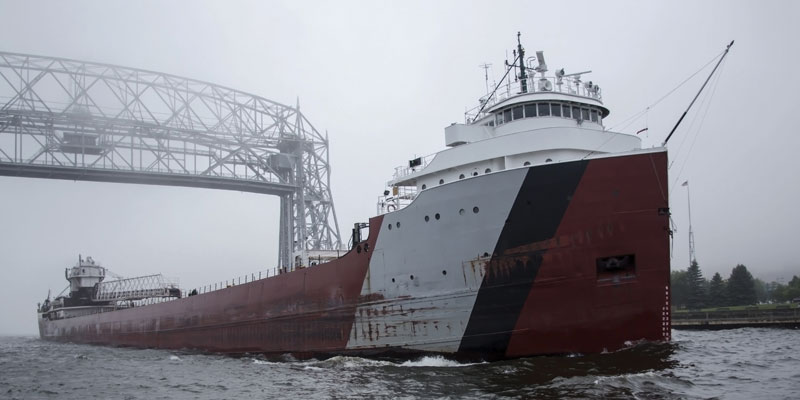Disrupting bacteria’s communication pathways may thwart costly infrastructure decay just beneath the surface in harbors worldwide.

Hundreds gather in the Duluth-Superior harbor for the lunchtime show. There’s no standup routine or street performance. Instead a slowly rising lift bridge and a loaded barge. Although this captivates onlookers, they’re unaware of a real drama unfolding below the surface.
The barge and harbor infrastructure are under attack. Bacteria, algae and other organisms vie for space and frequently settle on steel structures. Steel makes an appealing home for these bacteria, and their growth alters the steel’s surface. In severe cases the process, known as biocorrosion, can lead stately docks to sheets resembling swiss cheese. The drama takes place in every harbor worldwide and a $60 billion coating industry aims to thwart it.
A coating that dominates the market is effective, but contains copper oxide. Heavy metals leach from the coating to keep bacteria from aggregating, but this also negatively impacts aquatic life in harbors. Despite these known impacts and harsh regulation on copper-containing coatings, no environmentally-friendly and scalable alternative exists.
Mikael Elias, a CBS and BioTechnology Institute assistant professor at UMN - Twin Cities, reached out to Randall Hicks, a professor at UMN - Duluth, after reading an article about ongoing research in the harbor. Hicks studies microbial communities in the Duluth-Superior Harbor and has worked for nearly a decade to address biocorrosion rates there. Elias saw a potential application for an enzyme — a molecule that drives chemical reactions — his lab recently modified. These enzymes prevent bacteria from communicating and grouping together. This creative approach could potentially stop bacteria in the harbor from grouping up on steel structures without negatively impacting aquatic life.
“Now [the enzymes] are so stable that we can use them in application fields that were not possible before. Where the typical enzyme is too unstable to use it outside of a test tube, our enzymes are so stable that we can dilute them into paint,” Elias says.
Hicks included coatings with the bioengineered enzymes from Elias in his trials. He found that they out-performed others in the lineup to inhibit biocorrosion. Researchers continue to study how the enzymes thwart biocorrosion, including how enzymes impact surface colonizing bacteria. They also continue to examine how long the coatings can remain viable in harbors. In order to replace the pervasive toxic copper-oxide coating, it must be scalable and relatively long lasting.
The potential to join a worldwide market of coating industry with an environmentally-sustainable alternative is not lost on the researchers. The team recently patented the engineered enzyme and continue to work with industrial partners.
Hicks says, “The new coating offers another arrow in the quiver to battle biocorrosion.” He also notes that, “Potential applications are way beyond Lake Superior and the market could be potentially unlimited if this coating works well in marine systems.” - Claire Wilson